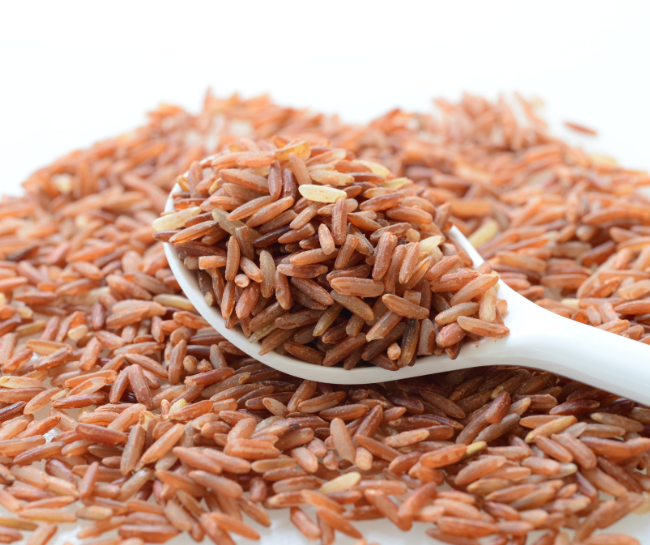Since the Han Dynasty in 206 BC, brown rice congee, also known as Jook, has been considered a medicinal food in China. This dish consists primarily of rice that has been cooked for a long time with added liquid or stock. This cure, which concentrates on the intestines and stomach, is beneficial for infants, as well as those with digestive difficulties and chronic ailments.
holdbarhet nespresso kapsler
vinglas boda nova
qatar airways handgepäck gewicht
חוק רמקולים תחת כיפת השמיים
כורסא אגורה
nike tech fleece tapered joggers in blue
dámské jarni kotníkové boty tamaris
best apple watch bands for women
dežna obleka za otroke
spodnje hlače moške
What is brown rice congee

Brown rice congee, also known as Jook, appears to be a loose rice soup that has been revered in China as a healing food since the Han Dynasty in 206 BC. This dish is primarily constructed of rice that has been cooked over an extended amount of time with added water or stock. This medicine, which concentrates on the intestines and stomach, can aid babies as well as individuals with digestive difficulties and chronic conditions.
Several methods sweeten or season congee. Switch to chicken, beef, or vegetarian broth or use equal parts water and stock to flavor rice. Garlic, ginger, chicken, and mushrooms may be used. Only your ingenuity and accessible supplies can limit your cooking flavors. When the congee is done, the fried crust is dipped into it.
💡 Rice porridge is simply rice cooked in liquid until it’s thick and creamy. Congee refers specifically to the savory rice porridge served in many parts of Asia.
Is congee healthy for breakfast
Congee is gluten-free since it contains rice. Rice, a carbohydrate, acts as the foundation for this dish. The ingredients, such as leftover oats and rice bowls, make the dish. It is possible to make a well-balanced lunch by including lean animal veggies, protein, fresh herbs, and a soft egg in your congee. Brown rice congee can also be used to supplement nutrients.
💡Congee is gluten-free because it is comprised of rice. And, while the base is rice, which is a carbohydrate, it’s what you put in it that matters, like with overnight oats and grain bowls.
Is congee more fattening than rice

Brown rice congee has the potential to induce a food coma. Despite this, the dish has few calories. Because water decreases carbohydrates, brown rice congee provides 30 fewer calories per 100 grams than plain rice.
Replace one daily meal with congee to reduce calories. If an average meal was 650 calories and congee is 150, you’ll lose 1 pound each week.
How to Lose Weight With Cooked Rice Water
Can congee help you lose weight
Reduce your overall food consumption by swapping congee for one of your daily meals. It is possible to lose one pound each week by removing 500 calories from your daily diet and replace them with congee.
How to serve healthy vegetarian brown rice congee with tempeh

A unique take on a Chinese traditional meal, the vegetarian brown rice congee with tempeh is a delicious way to start the day. But be careful not to scrimp on the toppings! They have great taste and are also visually appealing!
Ingredients
Congee:
- Brown rice, 1 cup
- 2 tbsp. coarsely shredded ginger root
- four minced garlic cloves
- 6 cups liquid
- With a pinch of salt
- 1 pound coarsely chopped baby spinach
Tempeh:
- 1 tablespoon sesame oil
- 1/2 onion, finely chopped
- two minced garlic cloves
- 8 oz. crumbled tempeh 2 tbsp soy sauce
Fried Shallots:
- Three peeled and sliced shallot rings
- 1 tsp. cornstarch
- 1 tbsp. sesame seed oil
For serving:
- shallots fried
- Tempeh eggs, soft or hard boiled
- Sesame seed oil
- Slices of green onion
- Sesame seeds, toasted
- Granules of red pepper
Instructions
- Fill a large pot halfway with water and brown rice and bring to a boil. Season your dish with a pinch of salt. It will reduce the rice to a soup-like texture and thicken the sauce for about an hour and a half, so keep stirring. If it becomes too thick, add more water. Sauté the spinach until it has wilted, stirring occasionally.
- While the congee is heating up, prepare the tempeh. Warm the sesame oil in a large skillet. Cook for about five minutes, or until the onions and garlic are tender. Before serving, check that the tempeh is well-browned and soft. When the meat is done, add two teaspoons of soy sauce to taste to the pan. Set aside in a bowl for later use when the water in the soy sauce has drained, about 1 minute.
- In a small pan, combine the cornstarch and shallot rings and stir thoroughly over medium-high heat. Shallots should be added and fried until golden and tender, about 2 minutes per side, before flipping. Place immediately on a platter lined with paper towels.
- Then, for a spicy and delicious congee, top it with tempeh, green onions, fried shallots, an egg, sesame oil, and red pepper flakes!
Thank you for your time! Don’t be afraid to express yourself by leaving a comment! Don’t forget to read our blog about: The Hunger Scale: Eating Only When Hungry



